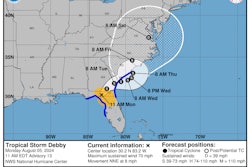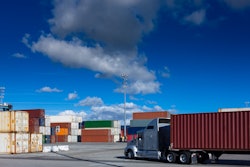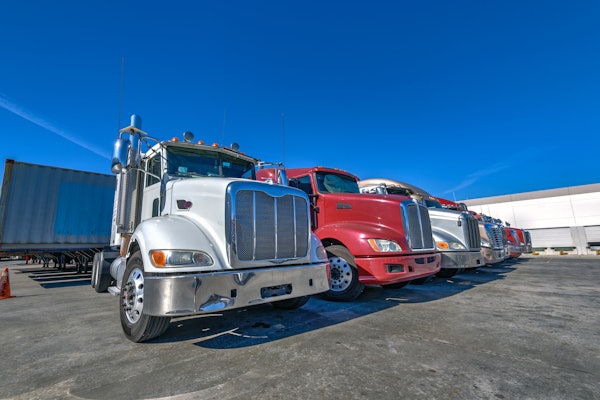Regulators often are legally limited to making regulations only about future vehicles or infrastructure. Existing vehicles and infrastructure often get “grandfathered,” meaning they are permitted to operate under the new rules even though they do not necessarily comply with them. There are a few instances where rules can be retroactively applied, but regulators often are just happy with taking the future wins rather than arguing over a decreasing population of older vehicles and infrastructure.
To put that in societal terms, Baby Boomers are permitted to reminisce about the 1950s and '60s in front of their Gen X, Gen Y and Gen Z offspring, because Baby Boomers were born before societal mores made reminiscing passe.
Vehicle size and weight regulations have a lot of grandfathered clauses. A sane individual might reasonably conclude that any truck and trailer driving on the road can legally go anywhere in the country, but, alas, that is not the case. When federal interstate network size and weight regulations were adopted, regulators had to admit that every state had previously evolved its own unique rules, and rather than fight that battle the feds limited new rules to what they had authorization over: the federal interstate highway system.
Trucking groups and vehicle manufacturer industry groups often complain to the federal government about how regulations are not uniform across the country, and yet, it’s not really the fed’s fault. Those diverse rules were created at the state level, and the joys of our system of government is that what happens in the state, largely stays in the state, to borrow a Vegas phrase.
The Federal Highway Administration (FHWA) keeps tabs on these state exemptions. You can find them on their Compilation of Existing State Truck Size and Weight Limit Laws website. You would think the various state trucking groups would be all for reducing complexity and therefore would standardize rules. In politics, however, reason and logic do not always prevail. Vested interests abound to influence state rule making. There also are physical conditions that may differ. For example, infrastructure in Massachusetts may have been built to different standards than in Idaho, just because of the differing ages of the roads and bridges.
I’ve driven on state roads in Arkansas, beautiful scenic routes where I would never attempt to drive a semi with a loaded trailer. While in Nevada, I’ve seen triples running on desert roads. Nevada has an exemption to “allow vehicles to operate up to 129,000 lbs. GVW on parts of the Interstate System.” In Washington state, I’ve seen semis on state roads pulling containers with gross vehicle weights of 105,000 lbs., and on some routes even more.
States also can provide individual exemptions through overweight permitting. There are even “heavy haul industrial corridors” in Washington state where “special overweight permits for this route may be issued up to a GVW of 139,994 lbs.”
My cynical perspective on overweight permitting is that if you pay enough for it, the state will let you do it. I always wonder how the civil engineers feel about that after they carefully designed the bridges and roads for different weight limits. I’m sure there is some statistical rationalization that the “occasional” overweight vehicle does not represent a significant risk.
I also have issues in that regulations seem to have been focused on managing individual vehicles. Concepts like platooning, whether human or autonomously controlled, present potentially new challenges to regulators if two or more vehicles can occupy less space than expected crossing a bridge. I expect it is fairly challenging legally to regulate multiple vehicles operating in concert in the real world. There could be multiple tractor OEMs, multiple trailer OEMs, multiple fleets and multiple drivers involved. Who would take responsibility for the whole group?
Interestingly enough, size and weight regulations seem immutably linked to emissions systems. FHWA identifies 40 states with emission reduction equipment exemptions. Many of these exemptions allow for added GVWR as an offset for requiring lower emission technologies such as idle reduction systems or alternative fuels. For example, the state of Alabama allows an additional 400 lbs. for idle reduction devices “which applies to axle weight, gross vehicle weight, or bridge formula weight, up to 400 lbs. or the certifiable weight of the unit, whichever is less.”
Farmers, ranchers, waste haulers and loggers seem to have a lot of exemptions. Every commodity has advocacy groups exerting influence on political decision making. Some groups are more successful than others at carving out regulatory exemptions.
When I was a teenager and contemplated a career in engineering, it really didn’t dawn on me that in time I would need to understand the legal system, the political system, marketing and sales, along with the obvious understanding of engineering. Everyday fleets and OEMs face a complex, illogical world of local, state and federal regulations.
We all have participated in making the freight world what it is, through voting, or not voting, influencing or not influencing, through court actions and paying taxes, and vicariously through all our grandfathers.
Wouldn’t it be interesting if we could start with a blank sheet of paper; one where local, state and federal rules were all the same and no exemptions were required?
But then, where would we be without our grandfathers?













